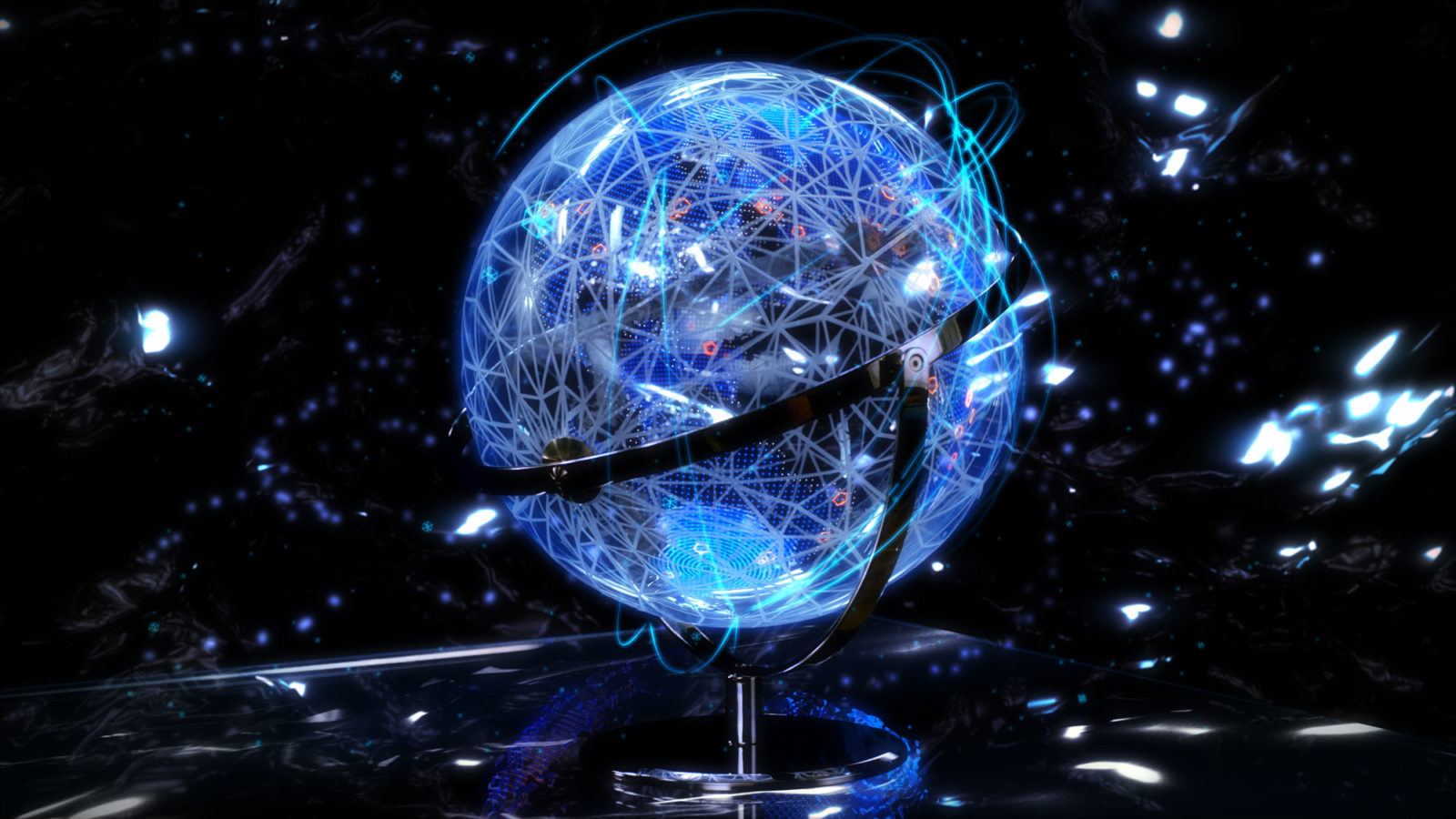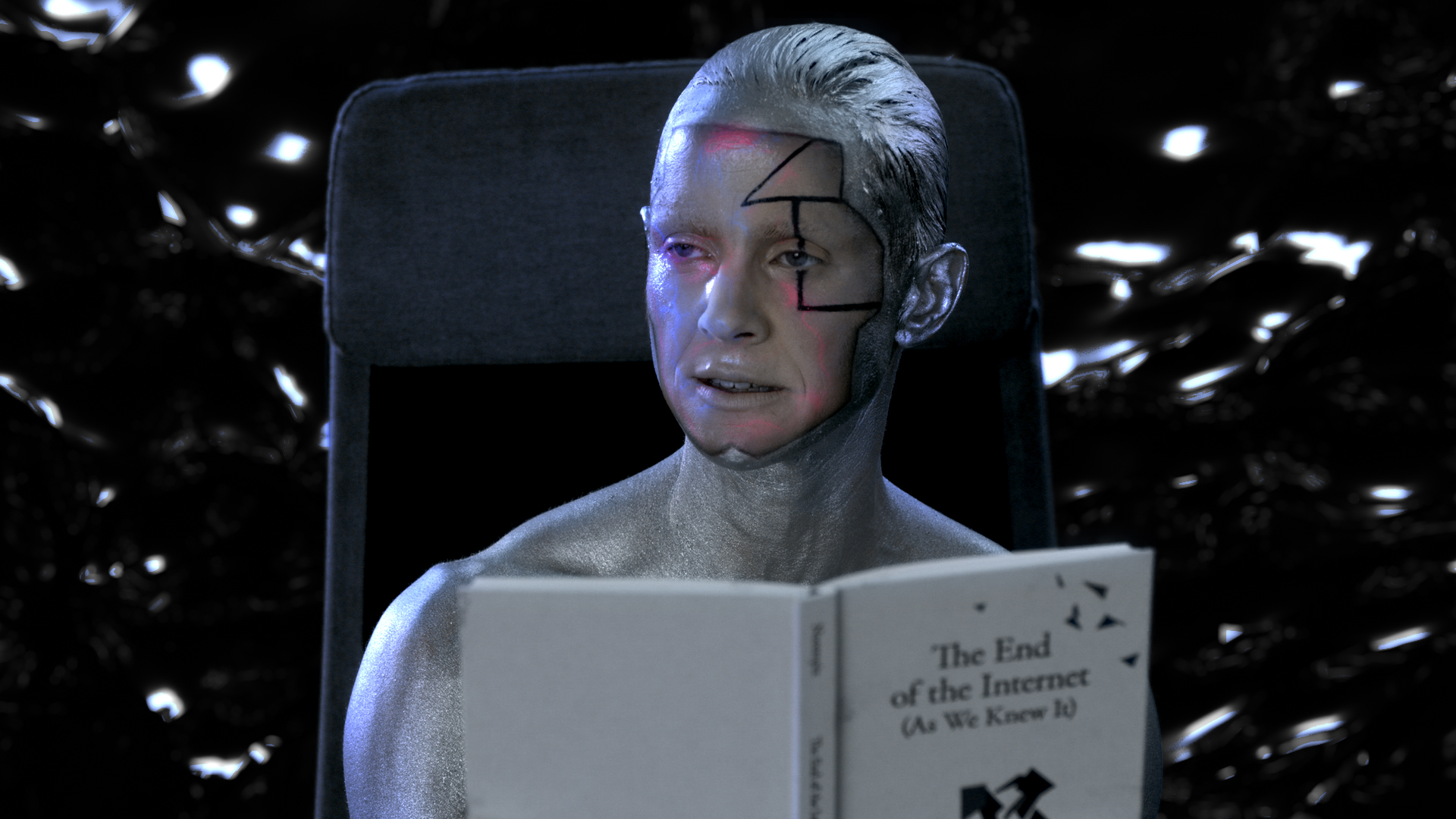“Contra-Internet” by Zach Blas Engages the Emerging Subversions of the Internet

Why is it so difficult to imagine an alternative or outside to the internet today? That is one of the questions at the heart of Zach Blas’s Creative Capital project Contra-Internet, exhibiting at Gasworks, a gallery in London now through December 10, 2017. Inspired by queer science fiction, Contra-Internet is a series of a works that critiques and provides alternatives to the oppressive, corporate and hegemonic forces that control the internet.
We spoke to Zach about the project.
Alex Teplitzky: Contra-Internet describes a series of artworks and writings you have worked on over the past few years, looking at the internet as a form of oppression. Can you tell us about the latest works that will be displayed in the exhibition? How has this project progressed since it began in 2014?
Zach Blas: Over the years, Contra-Internet has gone through three distinct phases for me. The first was more discursive—developing the concept of contra-internet as an alternative to post-internet. Two critical questions really drove my research during this period:
1) How and why did the internet transition from an arena of political potentiality to a premiere site of control? Here, I think back to the cyberfeminism movement of the 1990s. Incredible to recall, with the advent of the world wide web, that the cyberfeminists saw cyberspace as a potential site of liberation. Now, this online option for liberation seems to have disappeared.
2) Why is it so challenging to imagine—or construct!—an alternative to the internet? If the internet is so intimately connected with control today, then this question also evokes finding outsides to control or domination.
Thus, the project quickly took a more documentary focus, as I was taken by activist infrastructural projects around the world. I was inspired—and still am!—by the development and use of autonomous networks in both local communities and global protests. These endeavors open up political horizons beyond the internet as we know it (as I like to think).

Video still of Jubilee 2033 by Zach Blas, featuring Cassils.
Ultimately, I moved the project towards science fiction. The Gasworks exhibition is framed by a film installation titled Jubilee 2033. It’s a re-imagining of some scenes from British filmmaker Derek Jarman’s 1978 queer punk film Jubilee. The plot, in short: In 1955, author Ayn Rand (played by Susanne Sachsse) meets with Alan Greenspan; they take LSD; and are visited by Azuma, a Japanese artificial intelligence from 2017. Rand and Greenspan are shown a future Silicon Valley from 2033. Now in ruins and overtaken by a group of queer militants, they encounter Nootropix (played by Cassils), a contra-sexual, contra-internet AI prophet that lectures—and dances!—to a world after the internet has finally collapsed.
Part of my practice consists of creating concepts and discursive frames. I like how a new concept can make something seemingly unthinkable suddenly thinkable—tangible.
Alex: In your practice you are constantly looking for new or alternate means of systems, networks and classifications. As an early adopter of the internet, I have been disheartened to see it co-opted by corporations and governments for insidious purposes—yet I still maintain hope that queer and alternative modes of communication and expression are possible. Through your work on Contra-Internet, what are your conclusions regarding the second part of the project’s question, that it’s difficult to conceive of an alternative outside the internet today?
Zach: I have come to see the necessity of engaging that issue in at least two ways. To acknowledge, support, and celebrate the practical network alternatives that activists, artists, and technologists are making. Consider the Digital Stewards Program, for instance. I also value speculation and fiction here, to work at the political imagination. Trying to bridge that gap, between the practical and the imaginary, is certainly something to aspire to.
Alex: You refer to the idea of a kill switch for the internet, and ask, is it even possible to kill the internet today? You point to some current events where it actually happens–by authoritarian governments. But it’s clear to me in your references that if there was something like a Paris Commune today, a radical society outside the confines of governmental surveillance, it would have to use tools and concepts like the ones you have developed in Contra-Internet as building blocks—maybe Contra-Internet or The Outside is that already? Is that what you envision?
Zach: Part of my practice consists of creating concepts and discursive frames. I like how a new concept can make something seemingly unthinkable suddenly thinkable—tangible. So yes, these concepts are like starting points to build projects around. They’re slippery—I never fully have a hold on their discursive power—but that’s what makes them so attractive to me! I’m definitely drawn to this idea of the outside.
For instance, a core reference for Contra-Internet is the feminist theorists J. K. Gibson-Graham and their idea of post-capitalism, which names economic outsides to the assumed totality of capitalism. In the exhibition, I explore mysticism as a vector to the outside, by looking at the queer mysticism in Jarman’s Jubilee, but also how mysticism is deployed by Silicon Valley companies today.
To find out more, you’ll have to see the show! New Yorkers, that will be in January 2018 at Art in General.
Alex: I’m inspired by your relentless collaboration with other, like-minded artists, most recently seen with Cassils’ involvement in the video included in the exhibition, but also with other artists performance of Face Cages. Why is such rigorous collaboration and inclusion necessary for you?
Zach: Honestly, I just love collaboration. More is possible through collectivity!
Alex: The scope of Contra-Internet is large, so I’m curious how Creative Capital helped with the development of the project?
Zach: It is the largest project I’ve done. I’ve never been able to work at this scale before. The film alone has a cast and crew of about 100 people.
Simply put, Creative Capital gave me the support to pull this off! It is amazing that I finished film school in 2004 and am only now making my first film. Thank you, Creative Capital! It’s been a long time coming.
To read more about Contra-Internet check out the Gasworks website.
